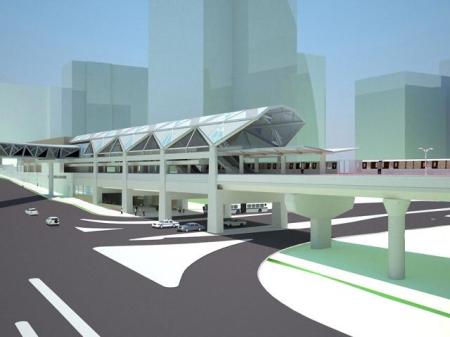So, the laptop repairs didn’t quite work out as planned. A new machine is on order, but I’ve managed to commandeer a friend’s computer.
Aw, thanks very much! I’ll see you on Thursday.
Hopefully I’ll have some more substantive stuff up soon. In the meantime, some quick notes:
More on the shortcomings of most libertarians when it comes to cities
I don’t want to lump everyone in one category, because there are some great thinkers out there applying libertarian thoughts to urban contexts, making sure to incorporate the histories, regulations, and subsidies into account. Most, however, don’t follow that line of thought.
BeyondDC points us to a great post from the Urbanophile:
I read articles out on the net with the general theme of claiming that a cabal of planners is conspiring to force us all to move back into overcrowded tenements in order to recognize their dream of reurbanizing America. There’s no doubt that plenty of progressives write about how people ought to more or less be forced back into the city. And I’m sure in some places there are planning rules designed to achieve this effect, like urban growth boundaries. But if you ask me, the practical reality in most of the United States is exactly the opposite situation. Virtually every piece of planning regulation I see acts to discourage urbanization and especially to reduce densities below market demand.
If you want people to live more densely, no nefarious planning rules are necessary. In fact, simply remove a lot of the ones we have and American cities would get much more dense in a hurry. The free market wants more density.
The whole thing is worth a read. The assumption that planners who want more density are somehow communists or working against the benevolent hand of the free market is bunk – as is the assertion that the mere existence and popularity of McMansion-y sprawl is some magical manifestation of overwhelming demand for that lifestyle.
While we’re on the theme of faulty assumptions…
Ryan Avent has a great post on Streetsblogon other faulty assumptions, particularly with what we consider inconvenient. Namely, the assertion that Americans won’t chose to inconvenience themselves, whether by wearing a Jimmy Carter-esque sweater instead of fully heating the house in the winter, or using mass transit instead of the car (assumed to be both faster and prefered). Europe is often cited as an example of a different lifestyle, yet the American choice of personal automobiles, larger houses, and the like are assumed to be ‘better.’
But there are lifestyle issues involved, particularly where transportation and land use are concerned. And contrary to Rosenthal, it isn’t that Europeans have opted for inconvenience. Rather, they have chosen different conveniences, as her Stockholm air train anecdote makes clear.
I think it is very difficult, objectively, to demonstrate that their choices have produced ways of life that are clearly less convenient than American lives. It is clear that Europeans tend to have better health outcomes than us, and they die in car accidents at much lower rates, and of course they’re enjoying levels of wealth similar to our own while producing half as much carbon.
The obvious retort to this line of thinking is that perhaps that’s all true, but like it or not America is now sprawling, and any effort to make the country greener by pursuing European land use and transportation options would be very difficult. In a similar vein, it is argued that attempts to push Americans into such a life via gas taxes or carbon prices would wind up being very painful.
But this is not quite right. As I have pointed out before, America will more or less need to build itself all over again by 2050 in order to accommodate population growth. Just because most of America is currently sprawling doesn’t mean that most of the America built between now and mid-century has to look the same.
Ryan’s exposure of the cultural differences points out, implicitly, what will be required to change these mindsets. The important thing to remember is that we didn’t sprawl instantly, nor did we build our transportation infrastructure instantly. The inevitable rebuilding of America will take place over the next 40 years, so there’s plenty of time to get the ball rolling in a more sustainable direction.
Cultural change starts at home. If parents had the chance to downsize into an urban condo or other attached housing after the kids move on in life, perhaps this change could get started. Now, if only there were some developers that wanted to build some urban density…









